What Can I Do to Stop Rnning to Pee When I Drink a Beef
Issue number 28.3 Nutrition
The water requirements and drinking habits of cats
Published 12/12/2018
Also available in Français , Deutsch , Italiano , Polski , Română and Español
Water is one of the most basic molecules in the universe, and essential for life as we know it; dehydration is not compatible with health. It may therefore seem odd to have an article on water intake, but even the simplest of actions can have hidden depths, as revealed by Stefanie Handl and Julia Fritz.
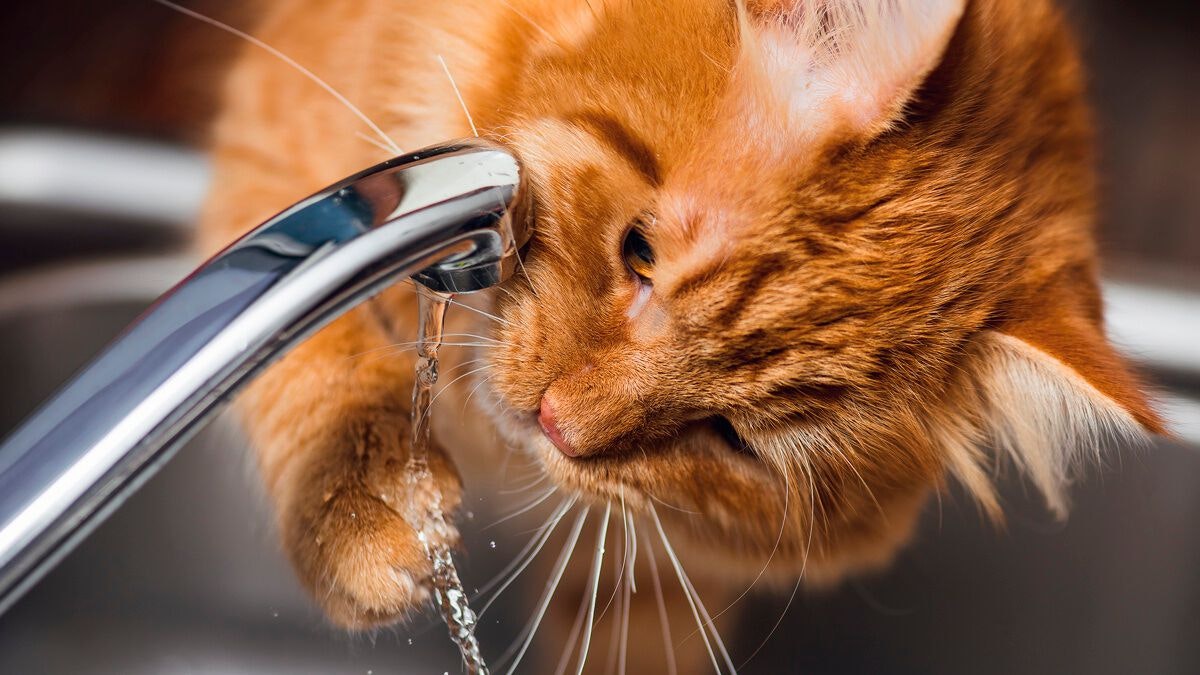
Key Points
There are very few studies on the drinking behavior and preferences of domestic cats.
It is well recognized that cats are predisposed to urinary tract disease, and that a lack of fluid intake can be a predisposing cause.
The authors' survey showed that cats apparently like to use different drinking options, and should therefore be offered several possibilities.
Cats seem to prefer their water to be provided in a small bowl located away for their food bowl.
Introduction
We all need to drink water to survive, but it is well recognized that certain species have evolved specific mechanisms to deal with water intake and homeostasis. The domestic cat is known to have certain physiological characteristics that can help with fluid balance; for example, cats can tolerate acute fluid losses – up to 20% of their body weight – comparatively well 1. On the other hand, they have the ability to produce highly concentrated urine 2 in order to conserve body fluid if necessary. It has been suggested that these abilities are because the domestic cat (Felis silvestris catus) is a descendant of the African wildcat (Felis silvestris lybica), an alleged "desert dweller" ( Figure 1 ). However, the domestication of the cat most probably began 9,000-10,000 years ago, coinciding with man settling in the so-called "fertile crescent" – the area around the Euphrates and Tigris rivers, now Iraq, Syria, Lebanon, Israel, Palestine and Jordan – which was by no means a desert at that time.

It is unclear whether these characteristics actually mean that cats are predisposed to certain diseases – for example, can chronic dehydration or the production of concentrated urine lead, in time, to permanent damage of the kidneys and urinary tract? This may not be relevant for a wildcat with a relatively short life expectancy, but could certainly be important for the domestic cat, which can have a life expectancy exceeding 20 years. On the other hand, domestic cats live under very different conditions (often living indoors, with a distinct lack of exercise, and with food provided) to wildcats, and these factors may contribute to, or even cause, urinary tract disorders. Against this background, the fluid intake of the cat should certainly be given special attention, whether that is when considering general advice on how to keep and care for a cat, or in the context of dietary recommendations.
Small-diameter water bowls are generally preferred by cats, and wherever possible an owner should provide a variety of bowls of differing materials and in different sizes.
Julia Fritz
Water requirement and fluid intake
Typical recommendations are that a cat requires about 50 mL of water per kg of bodyweight daily 3 – so this translates into 200-250 mL per day for a cat weighing 4-5 kg. This water requirement can be covered by the intake of "free water" from liquids and food, or from "oxidation water" produced by metabolism. This means that burning 1 g of protein, starch or fat yields just under 0.4 g, 0.6 g and 1.1 g of water respectively 4. The natural food of cats – i.e., prey such as small mammals and birds – contains about 70% moisture 5. Therefore, with 200-250 g of food ingested each day (corresponding to the average energy requirement), 70% of the animal's fluid requirement is already covered by food intake – without taking the additional "metabolic water" into account. If a cat eats wet food that has an 80% water content (again at an average requirement of 250-300 g), the fluid requirement can be fully covered. Studies conducted more than fifty years ago showed that cats could cover their fluid balance by ingestion of fresh fish or meat alone 6.
As the amount of food eaten is primarily determined by the animal's energy requirement7, food with a low-energy density and high-moisture content consequently leads to a higher fluid intake and so to an increased amount of urine 8, as shown in Figure 2 and Figure 3 . With commercial dry diets, which contain a maximum of 10% moisture, cats must drink additional water to meet their needs. Most studies on this topic conclude that when cats are fed only dry food, they consume less water in total 9 10 11 and it is therefore often proposed that feeding mainly or only dry food is a risk factor for kidney and urinary tract disease, although studies to date show contradictory results.
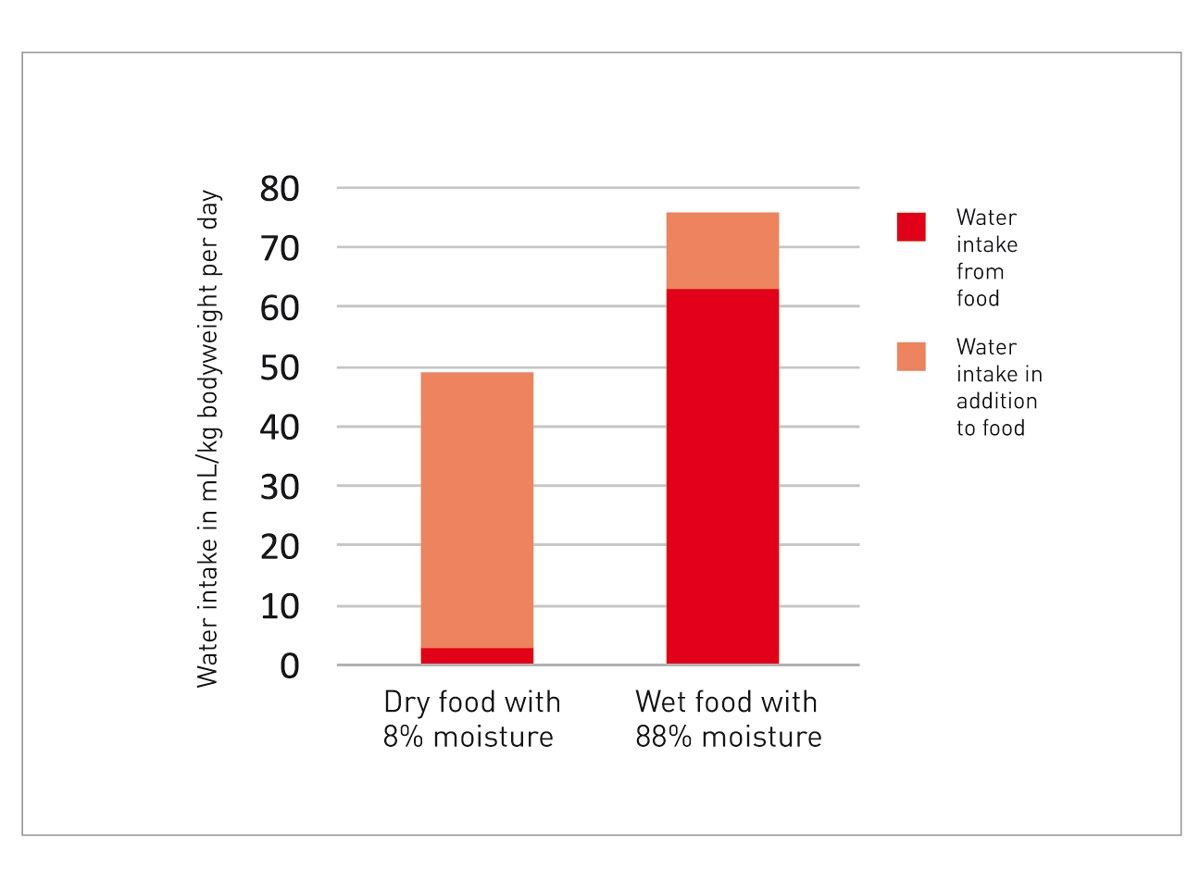
Figure 2. Fluid intake of cats fed dry and wet diets 8.
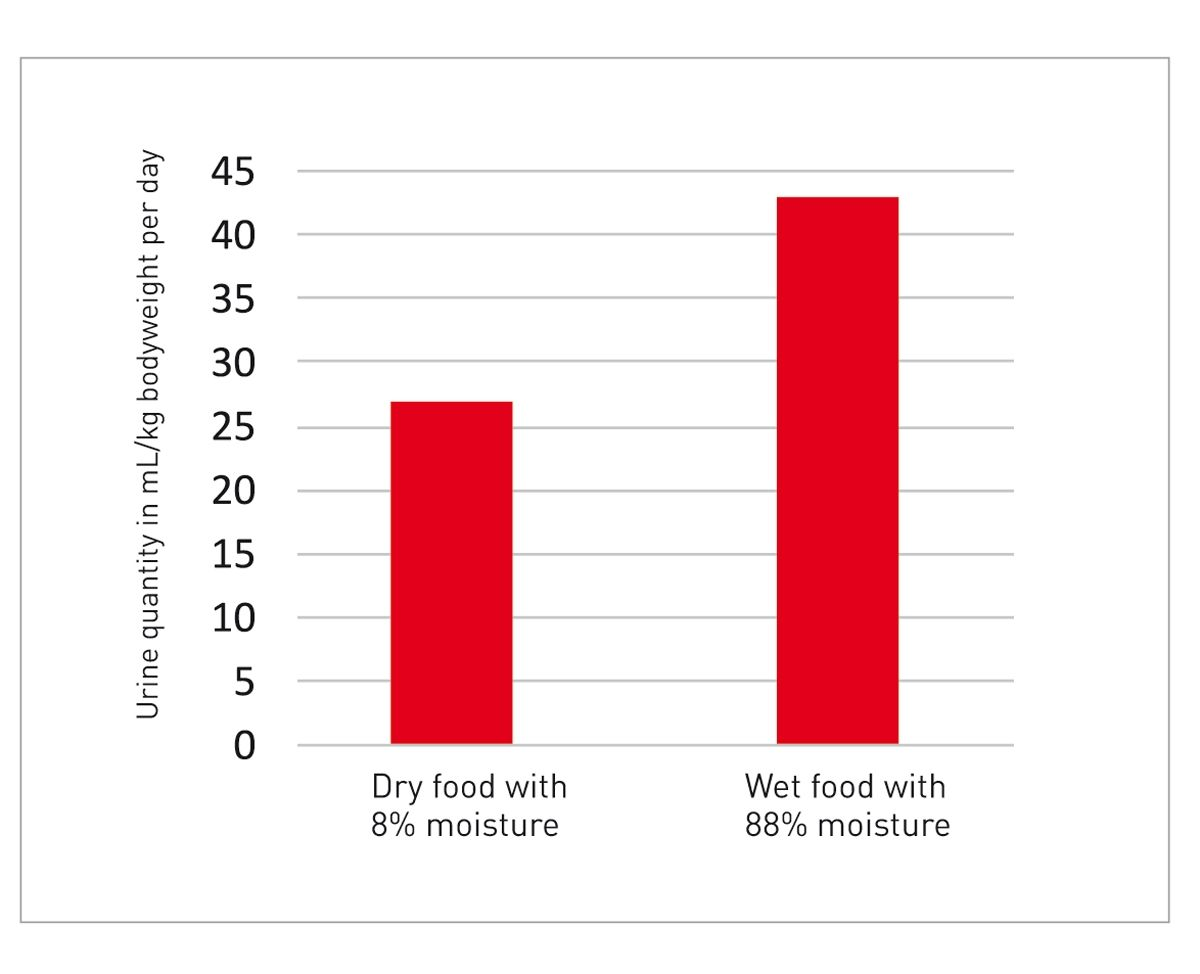
Figure 3. Urine quantity in cats fed dry and wet diets 8.
For example, one study 12 identified dry food (either as part of the daily diet ration or fed exclusively) as a risk factor for "Feline Lower Urinary Tract Disease" but made no distinction between urolithiasis and other urinary diseases. Another study 13 concluded that the type of diet fed did not seem to be a causative factor for feline interstitial cystitis (FIC), but that obesity and stress were the main reasons. Dry food was also not shown to be a risk factor in chronic renal insufficiency1415 . Probably the greatest influence of diet on disease is seen in urinary calculi, and here not only the moisture content, but other properties of the food (e.g., the ratio of protein/fat/ carbohydrates, the cation-anion balance) also play a role. In an experimental study on urolithiasis11, researchers showed that a higher fluid content in the diet reduced the risk of calcium oxalate calculi but not struvite.
Fluid intake and urine composition
The composition of the urine, the specific gravity and the pH value are decisive factors for the formation of urolithiasis 16. These factors are influenced by the diet fed and the fluid intake. It should not be forgotten that the volume of fluid intake does not necessarily correlate directly with the volume and concentration of urine formed. Urine concentration and composition are therefore not only dependent on the water content of the food, but also on the content of substances excreted in the urine (especially protein and minerals), which in turn affect the urine volume itself as well as the amount of minerals excreted and the urine pH 17. Study results on the influence of certain types of food or specific diets can therefore be difficult to interpret, as all these factors need to be considered.
The drinking habits of domestic cats
Despite numerous studies on the intake of water with food and risk factors for urinary tract disease, the authors are not aware of studies that specifically address the drinking habits or preferences of domestic cats. Various recommendations (e.g., "cats do not want to drink near their feeding place" or "cats prefer running water from sources such as cat fountains") have their origin in popular literature or are derived from behaviors in the wild. The authors recently conducted a survey to document common practices in the provision of drinking water for cats and to identify preferences.
Methods
A questionnaire on cat data (age, breed, sex, existing diseases), living conditions (place of residence, freedom of movement, other pets in the household), feeding, range of drinking options (type, quantity, location, material) and observed drinking behavior and preferences were given to cat owners among the authors' clientele and distributed to other veterinary practices and clinics, as well as on-line platforms.
Results
Participants and demographic data
A total of 549 questionnaires were received for evaluation. Most were from Germany and Austria, with some from Switzerland. The gender split for the cats was almost exactly 50% male-female, almost all of them neutered. Two-thirds were domestic shorthair cats; the most widely represented pure breeds were Maine Coon (5%), British Shorthair (4%), Persians and Siamese (3% each).
23% were purely house cats, 40% had restricted freedom of movement (balcony, terrace, garden) and 37% had unrestricted freedom of movement. 32% of cats lived in a big city, 25% in small towns or suburbs, and 43% in a rural area. 33% were kept alone, 44% with other cats, 27% with dogs.
Feeding and health profile
Three quarters of the cats in the survey were deemed by their owners to be healthy; the remaining 25% were reported to suffer from a variety of diseases, mainly chronic renal insufficiency, osteoarthritis, allergies and acute injuries. It should be noted that the diagnosis was only from the information provided by the owners, and not necessarily corroborated by veterinary input. The type of food provided to the cats is shown in Figure 4 and Figure 5 . Cats that ate a lot of wet food (up to the same proportion with dry food combined) were significantly less common among affected animals. However, with regard to urinary tract disease, no obvious link between the type of diet and disease could be identified.

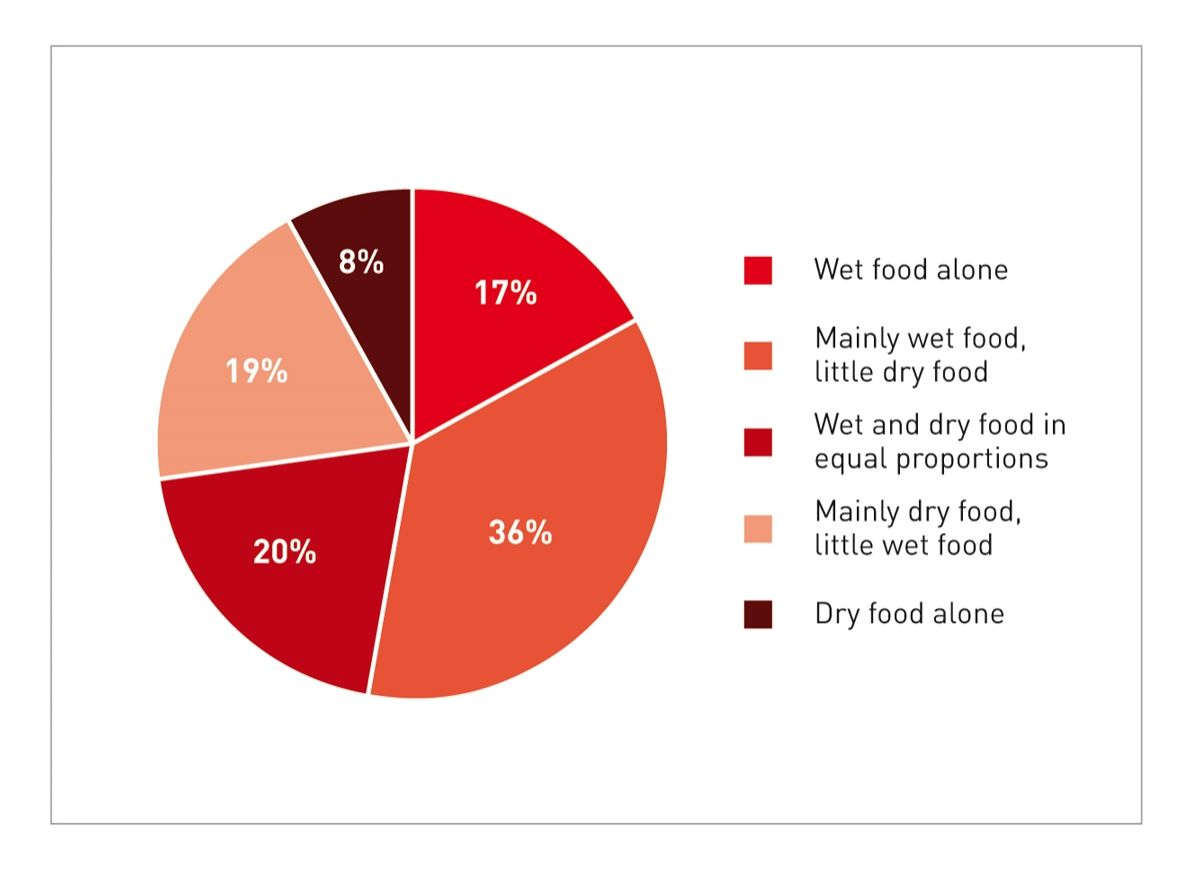
Water options and drinking habits
Most of the cats (> 80%) were given water in bowls, the most popular alternative being a cat fountain. However, amongst cats that had access to both options, the majority preferred the bowl. Furthermore, the size of the drinking receptacle seems to be relevant, as small bowls (<15 cm in diameter) were preferred to larger bowls. No preference was reported for the material the bowl was made of; ceramics (60%) followed by plastic (38%) were the most common materials used; less frequently metal (35%) and glass (13%) bowls were provided.
Many owners will only provide one watering point for their cat, and this is very often next to the food bowl – but cats generally prefer water points sited away from where they eat.
Stefanie Handl
Whether cats would generally prefer the option of drinking from other than bowls or fountains could not be concluded from the data because there were too few other drinking options to make statistical evaluation possible. However, nearly 60% of the cats were observed (daily or occasionally) drinking from other water sources, such as watering cans, flowerpots or dishes for humans ( Figure 6 ). Half of the cats with outdoor access were observed drinking from ponds, puddles or flowerpots ( Figure 7 ). Cats who had unrestricted freedom of movement significantly preferred outdoor water points rather than their bowls inside the home.

The cats mostly drank in a squatting position, although outdoor cats often also drank while standing up. Almost half (44%) not only drank, but also played with the water.
The most common water source was fresh tap water; if alternative sources were available (i.e., filtered tap water, still mineral water, rainwater), the cats preferred tap water (which is of very good quality in Germany and Austria) although outdoor cats also liked to drink rainwater. 27% of pet owners also gave their cats fluids other than water to drink, most often milk or "cat milk" (lactose-free milk).
Outdoor cats used significantly more water points than purely house cats, even though more than half of the pet owners (52%) provided several sources of water. If there were several options to choose from, water points in a room other than the one where the food bowl was located were preferred. This applied to both house cats and outdoor cats. Nevertheless, in many households (41%), a water bowl was placed right next to the food bowl.
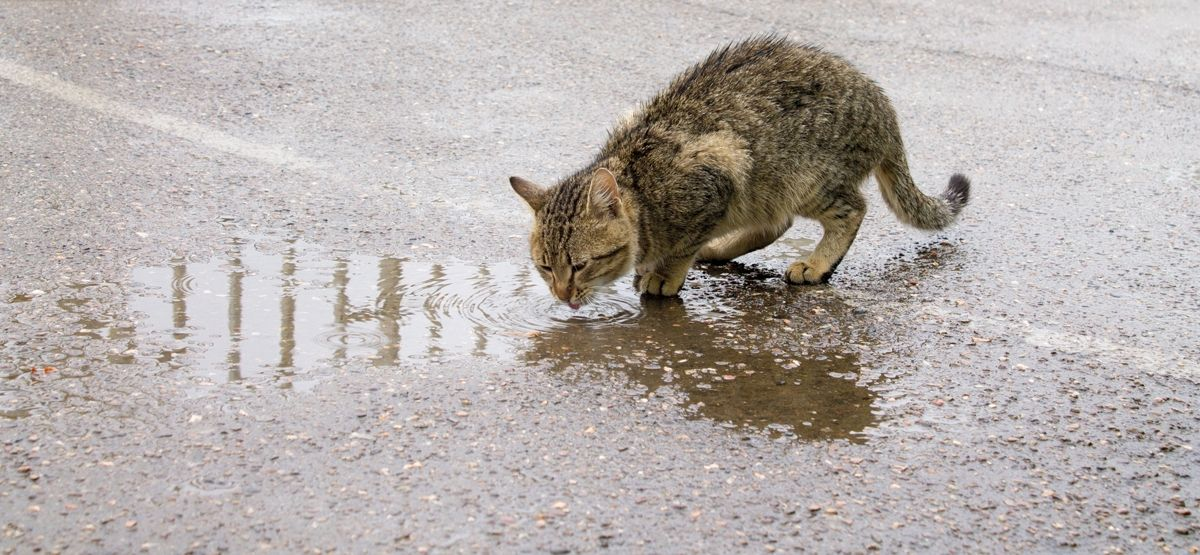
The water bowls were checked several times a week by all cat owners surveyed, and more than 90% checked the bowls "daily" or "at least once a day".
Three quarters of owners also cleaned the water bowls daily. With outdoor cats, bowls were usually only washed with water, whereas for indoor only cats dishwashing detergents or dishwashers were also frequently used. Disinfectants were never used.
Summary and discussion
The primary objective of the survey was to identify the preferences of cats for the type and supply of drinking water in order to derive recommendations for practical use, and some of the results have already been presented at international conferences 1819. When interpreting the results, it should be kept in mind that it was only possible to evaluate the information as provided by the owners, which may in turn depend on how much time they have to observe their cats, among other factors.
In general, cat owners were apparently aware of the importance of drinking water – regardless of the moisture content of the food – because they all not only checked and refilled the bowls almost daily but also frequently cleaned them. However, only half of the owners provided more than one watering point, and very often this was next to the food bowl ( Figure 8 ). To this end, this allowed confirmation that cats generally prefer water points sited away from where they eat. It is possible that this reflects original feline behavior, as feeding sites and available water sources in the open countryside are often not close to each other.
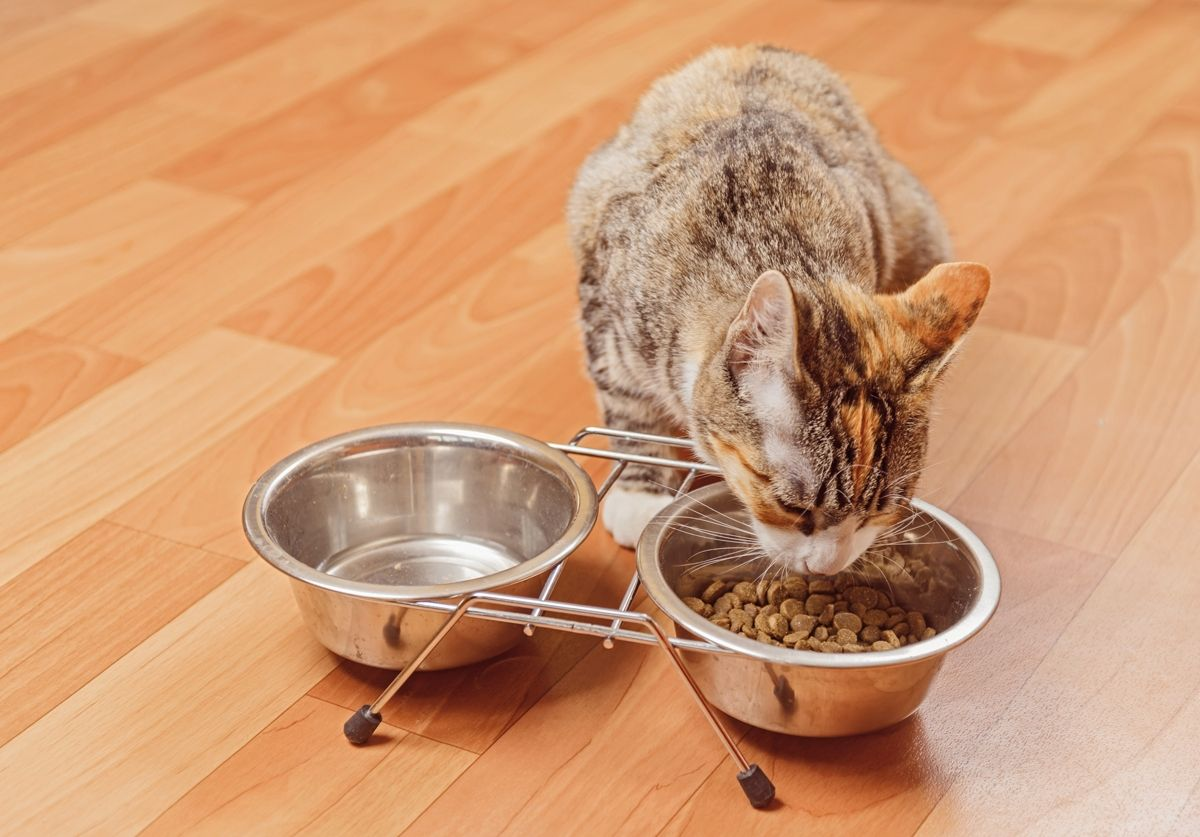
A general preference for a bowl made of a specific material did not seem apparent, but there is a preference for smaller diameter bowls when it comes to size ( Figure 9 ). This smaller size may help the cat to identify the edge of the bowl and the water surface with their whiskers.

Cat fountains are often recommended to promote fluid intake, as cats supposedly prefer running water ( Figure 10 ). This was not confirmed by the survey, but the findings are consistent with other studies that did not find a statistically significant difference in water intake between bowls and fountains, but rather large individual differences and preferences 20 21. Interestingly, one of twelve cats in a study was stressed by a water fountain to the extent that it showed aggression, overgrooming and vomiting 20.
Cat fountains are often recommended to promote fluid intake, as cats supposedly prefer running water, but it seems that their use will depend on an individual cat's preference.
Stefanie Handl
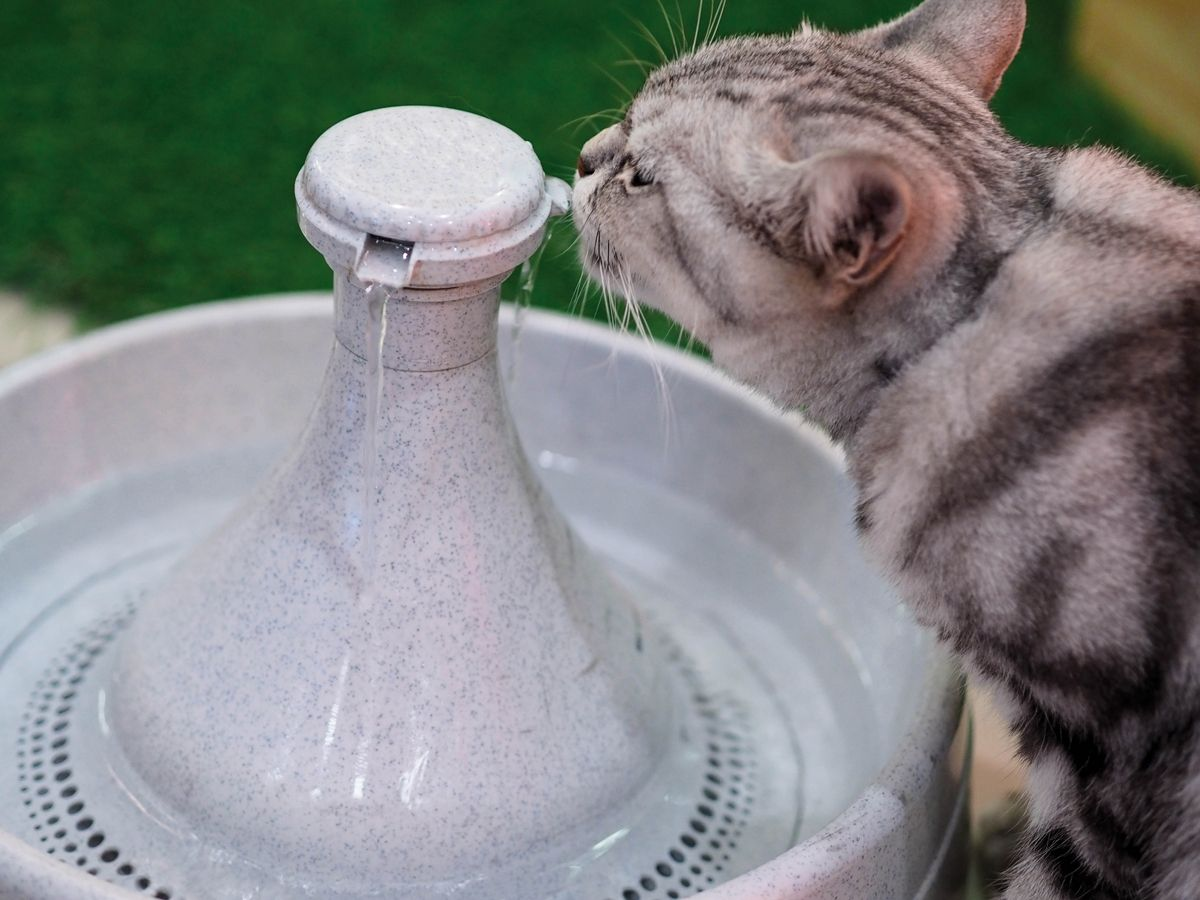

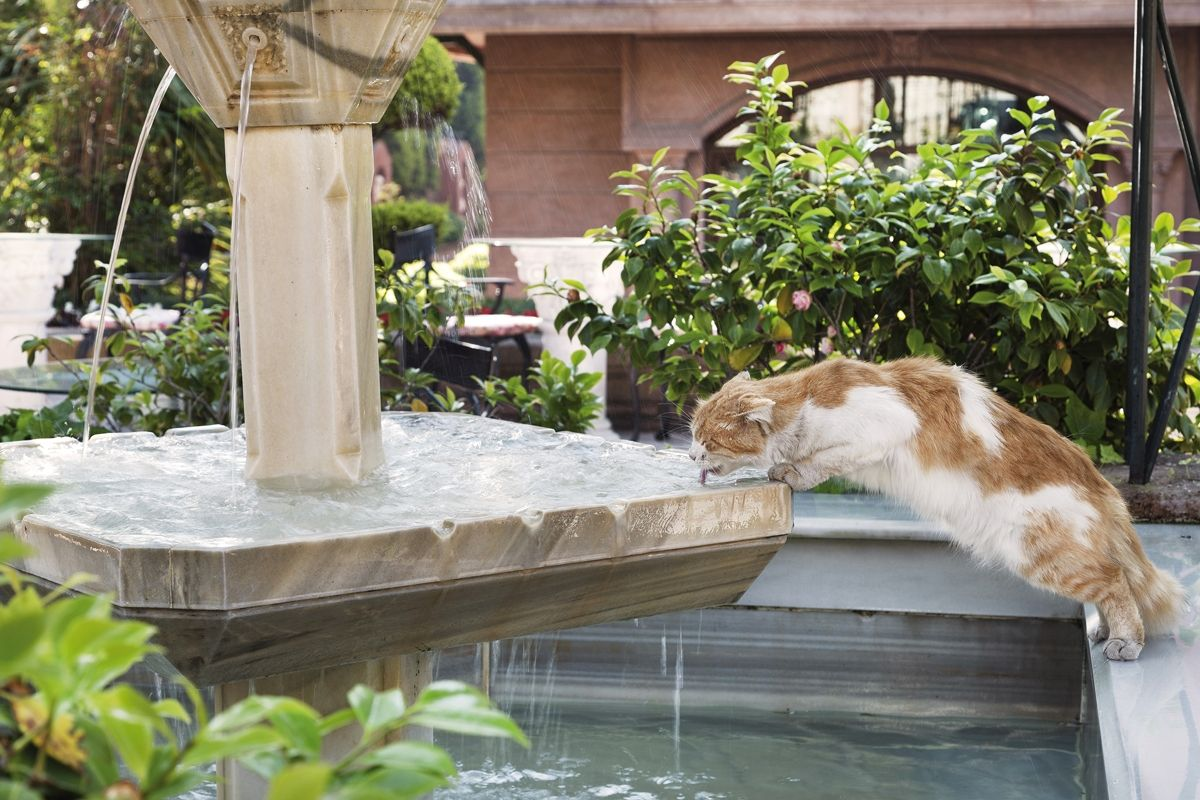
Cats do not only seem to be individuals when it comes to eating, but also in their drinking habits. To the authors' knowledge research has not been done on whether the behavior patterns around location, shape or quality of the water bowls or the taste of the drinking water is similar to behavior patterns linked to feeding 22, and whether a once-learned drinking preference from specific containers will last a lifetime.

It is also questionable whether the frequent use of other sources of water (such as drinking glasses, flowerpots or ponds) suggests that the water bowls provided by the owner were unacceptable to the cats, or whether it is part of natural feline behavior to have different watering points that are used "in passing". The question also remains open as to whether the frequently observed "playing with water" should be interpreted as part of drinking behavior ( Figure 11 ) or whether it is triggered by boredom or an interest in something new.
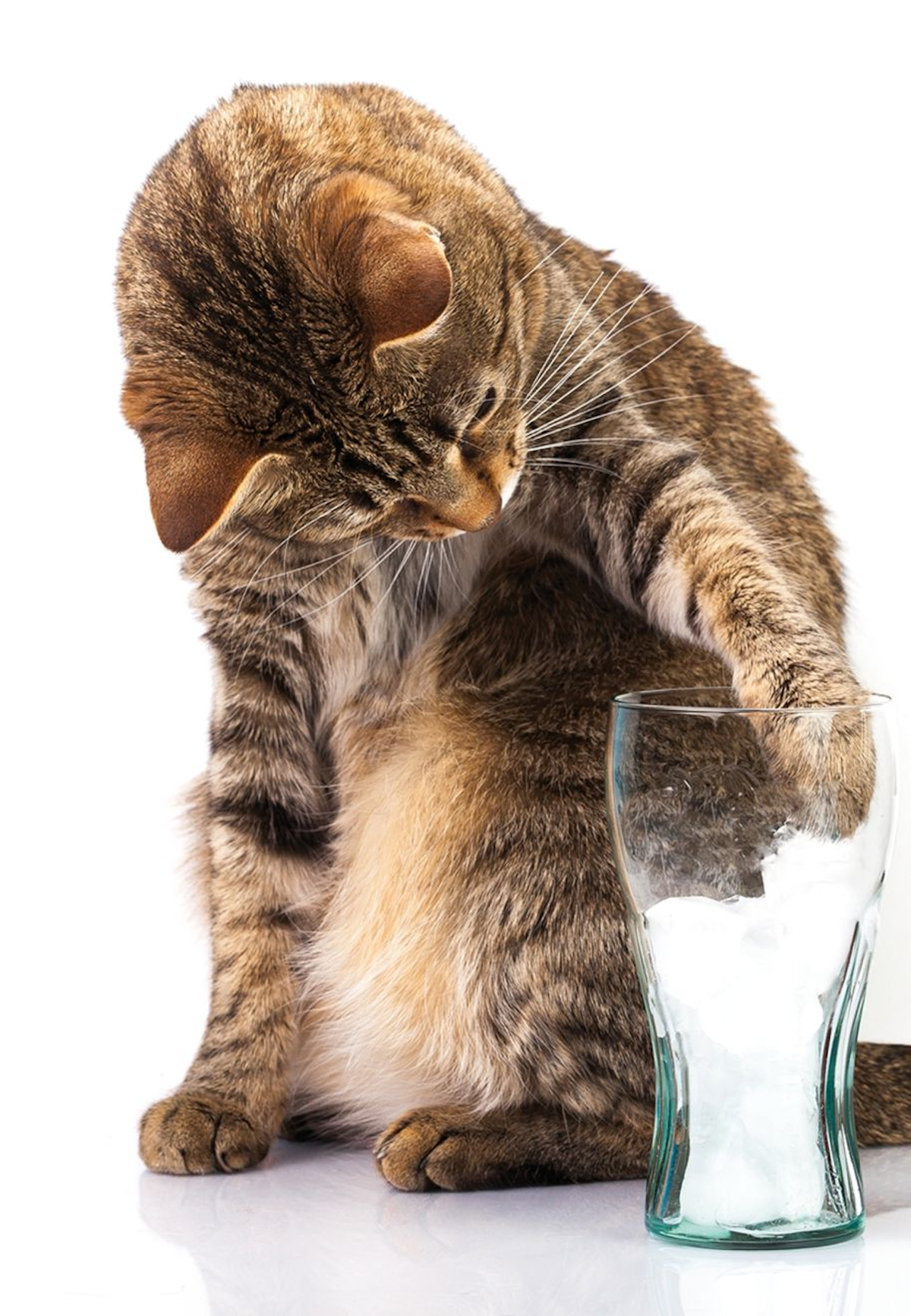
In terms of feeding, the survey noted an increasing trend towards home-prepared food or the supplementation of commercial diets with meat when compared to previous reports: a 2009 survey of 243 cats found that less than 1% of the food was home-prepared and only 10% combined 23, whilst this study found more than 3% of cats were offered home-prepared (mostly raw) food and 26% cats received a combination of commercial and homeprepared diets. A diet combining both wet and dry food was by far the most popular in both studies, at 70% in the 2009 study and about 75% in this study. The proportion of cats fed only dry food was significantly lower in this study (at just under 8% compared to 17% in 2009). This development could be explained by the fact that dry food alone is often presented in popular literature as "unhealthy" – mainly because of the link to reduced water intake.
In summary, the survey identified some interesting facts regarding cats and their drinking habits, and some general recommendations can be given to pet owners, as shown in Box 1 .
Acknowledgments:
The authors wish to thank Dr. Britta KieferHecker for participating in the development of the questionnaire, veterinarians Milena Schmidt and Dr. Anna Däuble for their assistance with collecting the data, and especially Dr. Christiane Weissenbacher-Lang for helping with the statistical evaluation. A special word of thanks goes out to all the veterinarians and veterinary clinics who supported the survey.
Owners will often seek reassurances and advice from their veterinarian about their cat's water intake. Cats can obtain a large percentage of their fluid requirements through food if they are given a diet with a high-water content (either commercial wet food or homeprepared meat), but if cats eat mainly (or only) dry food, their overall fluid intake will be lower. Owners should be encouraged to consider that their cat may have preferences or dislikes when it comes to drinking water, and should also be aware that a cat's natural curiosity may lead it to source water that is potentially unsafe.
References
- Adolph EF. Tolerance to heat and dehydration in several species of mammals. Am J Physiol 1947;151:564-575.
- Beuchat CA. Structure and concentrating ability of the mammalian kidney: correlations with habitat. Am J Physiol 1996;271:R157-R179.
- Scott PP. Nutrition and disease. In: Catcott EJ, ed. Feline Medicine and Surgery. 2nd Ed. Santa Barbara: American Veterinary Publications, 1975;131-144.
-
Schmidt-Nielsen, K. Desert Animals; physiological problems of heat and water. New York: Oxford University Press, 1964;277.
- Plantinga EA, Bosch G, Hendriks WH. Estimation of the dietary nutrient profile of free-roaming feral cats: possible implications for nutrition of domestic cats. Br J Nutr 2011;106:S35-S48.
- Prentiss PG, Wolf AV, Eddy HA. Hydropenia in cat and dog. Ability of the cat to meet its water requirements solely from a diet of meat and fish. Am J Physiol 1959;196;625.
- Kane E, Leung PMB, Rogers QR, et al. Diurnal feeding and drinking patterns of adult cats as affected by changes in the level of fat in the diet. Appetite 1987;9;89-98.
-
Zentek J. Untersuchungen zum Mineralstoffhaushalt der Katze unter besonderer Berücksichtigung des Magnesiums. Dissertation, Stiftung Tierärztliche Hochschule Hannover.
- Thrall, BE, Miller, LG. Water turnover in cats fed dry rations. Feline Pract 1976;6:10.
- Seefeldt SL, Chapman TE. Body water content and turnover in cats fed dry and canned rations. Am J Vet Res 1979;40:183-185.
- Buckley CMF, Hawthorne A, Colyer A, et al. Effect of dietary water intake on urinary output, specific gravity and relative supersaturation for calcium oxalate and struvite in the cat. Br J Nutr 2011;106:S128-S130.
- Jones BR, Sansont RL, Morris RS. Elucidating the risk factors of feline lower urinary tract disease. New Z Vet J 1997;45:100-108.
- Cameron ME, Casey RA, Bradshaw JWS, et al. A study of environmental and behavioural factors that may be associated with feline idiopathic cystitis. J Small Anim Pract 2004;45:144-147.
- Greene JP, Lefebvre SL, Wang, M, et al. Risk factors associated with the development of chronic kidney disease in cats evaluated at primary care veterinary hospitals. J Am Vet Med Assoc 2014;244:320-327.
- Finch NC, Syme HM, Elliott J. Risk factors for development of chronic kidney disease in cats. J Vet Intern Med 2016;30:602-610.
- da Rosa Gomes V, Costa Ariza P,Borges NC, et al. Risk factors associated with feline urolithiasis. Vet Res Comm 2018;42:87-94.
- Lekcharoensuk C, Osborne CA, Lulich JP, et al. Association between dietary factors and calcium oxalate and magnesium ammonium phosphate urolithiasis in cats. J Am Vet Med Assoc 2001;218:1429-1435.
- Handl S, Schmidt M, Däuble A, et al. Survey on water supply and drinking habits of cats. In Proceedings, 21st ESVCN Conference 2017;77.
- Handl S, Schmidt M, Däuble A, et al. Survey on body condition and feeding practices of cats in Austria, Germany and Switzerland. In Proceedings, 22nd ESVCN Conference 2018.
- Grant DC. Effect of water source on intake and urine concentration in healthy cats. J Feline Med Surg 2010;12:431-434.
- Pachel C, Neilson J. Comparison of feline water consumption between still and flowing water sources: a pilot study. J Vet Behav 2010;5:130-133.
- Bradshaw JWS. The evolutionary basis for the feeding behavior of domestic dogs (Canis familiaris) and cats (Felis catus). J Nutr 2006;136:1927S-1931S.
- Becker N, Dillitzer N, Sauter-Louis C, et al. Fütterung von Hunden und Katzen in Deutschland. Tierarztl Praxis K 2012;40:391-397.
- Kamphues J, Wolf P, Coenen M, et al. Katzen. Biologische/ernährungsphysiologische Grundlagen. In: Kamphues J, Wolf P, Coenen M, et al. (eds). Supplemente zur Tierernährung. 12. Aufl., Hannover: SchaperVerlag, 2014;395.
Facebook Twitter Linkedin
Stefanie Handl
Dr. Handl graduated from the University of Veterinary Medicine Vienna in 2002 and received her doctorate degree in 2005; she then went on to work as a research Read more
Julia Fritz
Dr. Fritz graduated in 2003 from the Ludwig-Maximilian University in Munich and received her doctorate in 2007 at the local Department of Animal Nutrition Read more
Other articles in this issue
Breed and diet-based disease in dogs
When faced with a dog that has a severe problem...
Feeding behavior in cats
We all need to eat to survive. But for humans...
Dietary considerations for dogs with chronic enteropathies
The various options now offered by specialist petfood companies for a dog with chronic gastrointestinal disease can be quite baffling...
gundersoncyricionsien.blogspot.com
Source: https://vetfocus.royalcanin.com/en/scientific/the-water-requirements-and-drinking-habits-of-cats
0 Response to "What Can I Do to Stop Rnning to Pee When I Drink a Beef"
Post a Comment